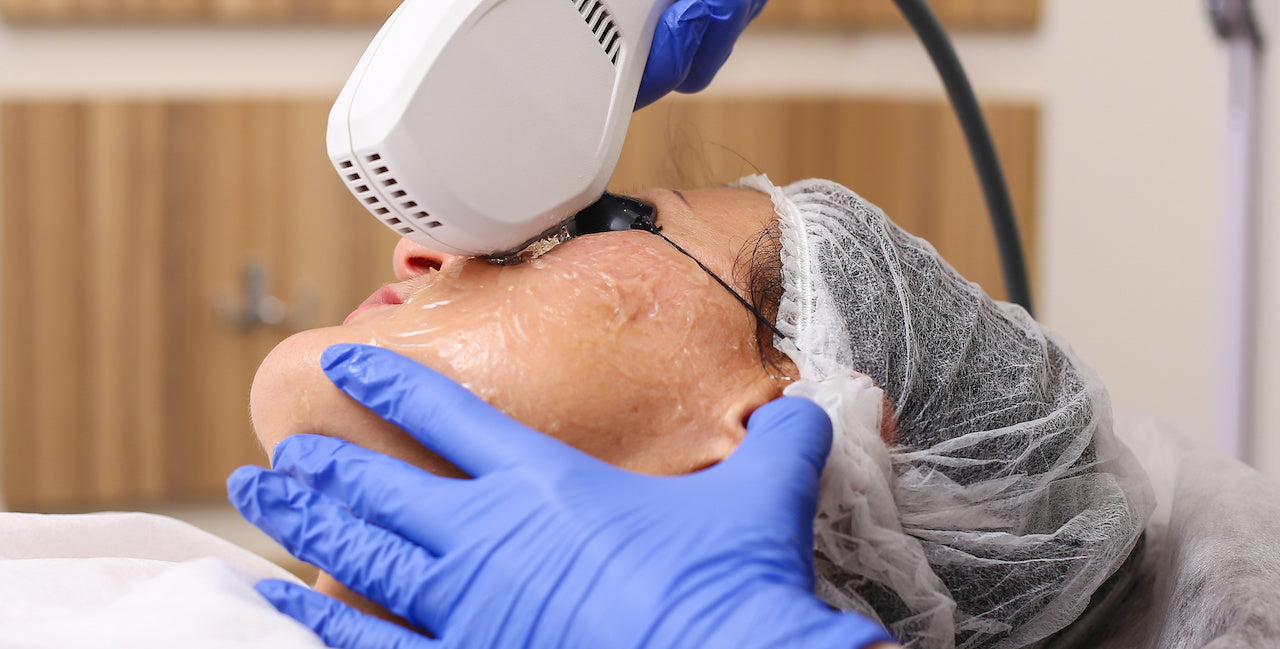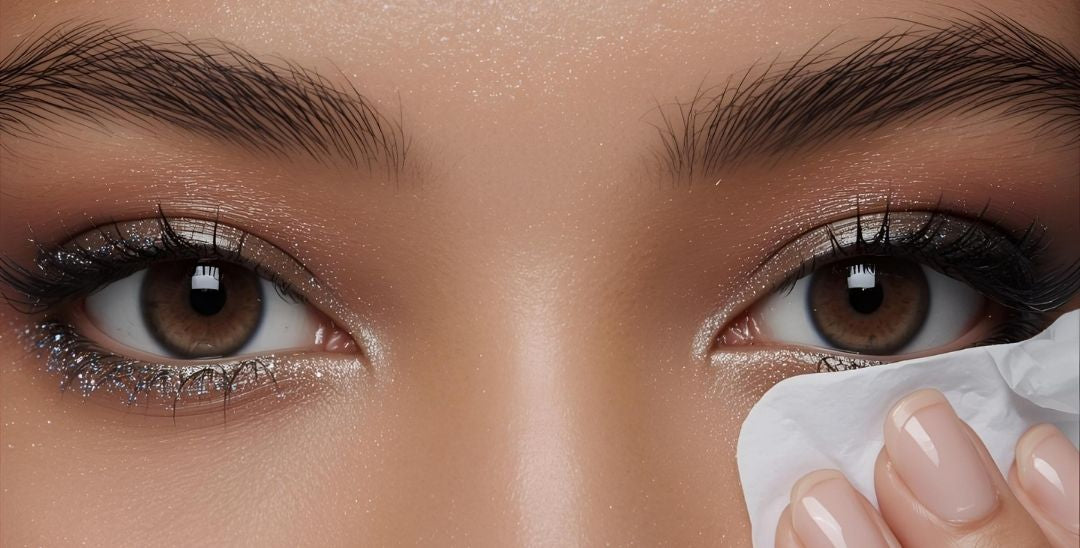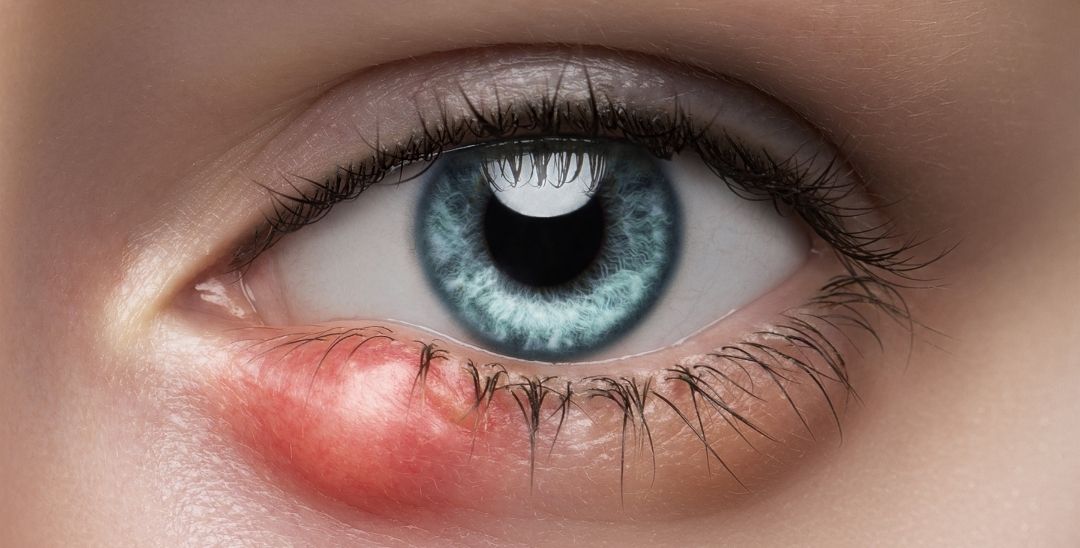Dry eye disease affects millions of people worldwide. It occurs when your eyes lack in the production of one (or more) of the main components of your tears, causing decreased tear volume and chronic irritation. There are many classifications of dry eye disease and depending on the type, certain treatments may be more applicable than others.
To learn more about Dry Eye Disease, be sure to read Dry Eye: Symptoms, Causes and Treatment and our post about the Role of Inflammation in Dry Eye.
IPL therapy is a non-invasive treatment that utilizes controlled pulses of visible light to target specific structures in the skin or, in the case of dry eye treatment, the eyelids.
Understanding MGD
Meibomian gland dysfunction (MGD) is the leading cause of evaporative dry eye. In MGD, the meibomian glands (responsible for the production of oil in your tears) become blocked and chronically inflamed. This inflammation causes a cascade of effects on the eye (and potentially on your sight): redness, tearing, grittiness, foreign body sensation, light sensitivity, hazy vision, irritation (and the list continues). Age, hormonal changes and environmental factors can influence MGD. Effective treatment of MGD involves targeting the meibomian glands themselves, to improve their overall function and decrease chronic inflammation. Treatment of MGD is crucial to maintain the health of the ocular surface as well as the integrity of vision.
Mechanism of Action of IPL
IPL has been used in dermatology for many years to treat a variety of skin conditions. It was first introduced commercially as a medical device in 1994 after advancements in the use of infrared and other wavelength-specific light therapies as early as the 1970s. The overall concept is similar to that of lasers: selective thermocoagulation of specific tissues. The basic principle is: The body contains chromophores (substances that can absorb or reflect light at specific wavelengths). The main three chromophores in skin are hemoglobin, melanin, and water. IPL light applied to the skin causes absorption of photons by these chromophores and the transfer of energy to them. This energy transfer generates heat and subsequently destroys the target structure. Contrary to laser therapy, IPL uses a polychromatic light source of a range of wavelengths in the visible spectrum (whereas lasers would use a single wavelength, or monochromatic light source). The polychromatic nature of IPL allows for some versatility here with respect to the patient’s skin type and the condition to be treated (1).
IPL for MGD
As mentioned previously, IPL has been used widely in dermatology. However it has also shown promising results in dry eye treatment. In dry eye treatment, IPL targets the abnormal blood vessels (telangiectasia) and inflammation in the eyelids and surrounding tissues which are common findings in MGD. The light energy emitted by the IPL device is absorbed by hemoglobin in these blood vessels and melanin in the skin. This process selectively heats and coagulates the abnormal blood vessels while sparing surrounding healthy tissue. By reducing abnormal blood vessel growth, IPL therapy helps to reduce the inflammation due to the presence of these blood vessels. IPL also improves the function of the meibomian glands by targeting the glands themselves and opening up blocked ducts (2,4). The reduction of inflammation also improves meibomian gland function as a secondary effect. All of this leads to a reduction in tear film instability, and alleviation of symptoms associated with dry eye syndrome. There is also some thought that IPL could stimulate cellular repair processes and promote the production of healthy tear film components, contributing to longer-term improvement in dry eye symptoms. Overall, IPL does show to provide longer term relief from dry eye symptoms as it is one of the only treatments that is less palliative (artificial tear drops) and more targeted to the actual cause of the dry eye itself.
IPL treatment session length and frequency can vary among patients due to skin type and severity of symptoms. The initial treatment phase typically involves a “cluster” of treatments close together, such as 3-5 sessions separated by one to two weeks. The goal of this initial phase is to significantly reduce inflammation and improve the overall function of the meibomian glands for maximum symptom relief. After this, your eyecare provider may recommend a series of maintenance sessions. These could be every few months, or much less than this, depending similarly on the patient as well as their response to the initial treatment phase. Throughout this time, your eyecare provider will be assessing your dry eye signs and symptoms and adjusting your maintenance schedule accordingly. It is important to remember that all patients are different, and that dry eye management is an individualized plan for each person; your eyecare provider may also recommend other treatments as adjunct to IPL depending on your specific case and needs.
Ocular Rosacea
Rosacea is an inflammatory skin condition which causes enlarged blood vessels and small, inflamed bumps on the skin. Rosacea is most commonly seen on the cheeks, chin, scalp and nose, but can also affect other areas of the face (including the eye). Ocular rosacea is a subtype of rosacea that affects the eyelid area. In ocular rosacea, redness and inflammation is found affecting the meibomian glands, which links the condition significantly with MGD as described previously. Inflammation plays a significant role in both ocular rosacea and MGD, propagating the dry eye symptoms and intensifying discomfort. IPL therapy has shown to be a great treatment option for ocular rosacea due to it’s ability to significantly reduce inflammation. This in turn significantly reduces symptoms and discomfort from the rosacea and dryness.
Risks and Side Effects
As mentioned previously, IPL has been used for many years in other areas of healthcare and medicine. It is now starting to be used more widely in dry eye treatment and esthetics. Side effects of the procedure are reported to be quite mild, and mostly consist of localized redness and a bit of discomfort during the procedure. Redness can persist for a few hours to days after treatments. Some patients may also notice the treated areas become a bit more sensitive to UV light; it is important to remember to protect your skin from UV rays after treatments. Very rarely, IPL could cause blistering on the skin - this would tend to occur if the energy settings were too high for the patient’s skin type or if the skin was not adequately protected during treatment. Some temporary changes in skin tone and pigmentation have been reported, more in darker skinned individuals. Eye irritation, although rare, has also been reported. Although IPL may work well for some patients, it may not work well for everyone. Some people simply may not experience the benefit or desired effectiveness that others do. There are some contraindications as well: patients who are or may be pregnant, sun-burned or recently tanned skin, patients taking photosensitizing medications or topical treatments or patients for keloid risk. Generally, the side effects are minimal and transient for this procedure, and this along with the potential benefits should be evaluated with your eyecare provider to determine if IPL could be a suitable treatment option for you.
Other effects and benefits
As mentioned previously, IPL has been used in dermatology for many years. Clinical studies also show that IPL improves the structural integrity of certain components of the skin’s extracellular matrix. In particular, IPL can enhance the proliferation rate of skin fibroblasts which are responsible for collagen synthesis. Thus, collagen production is increased. This has a direct relationship with the natural elasticity of the skin. Dermatological uses are similar in that IPL reduces abnormal vascularity in the skin reducing redness and inflammation; reduces appearance of wrinkles and improves the skin’s elasticity (3,5).
IPL has also shown to decrease overall bacterial load on the skin. This is especially important for patients with chronic dry eye, MGD and/or ocular rosacea as they are more prone to having higher levels of flora present on or around the eyelids (blepharitis). Further studies have shown that IPL can completely eradicate Demodex, a mite that can be found on the eyelid causing a stubborn, chronic inflammatory blepharitis.
Studies are also showing that IPL upregulates anti-inflammatory cytokines (inflammatory signaling proteins in the body) and/or downregulates inflammatory cytokines. The inflammatory cascade in dry eye disease is quite complex (and, not fully understood). However, it is likely that part of the improvement in dry eye symptoms is due to the ability of IPL to interfere with the inflammatory cascade seen in this condition. IPL also reduces other inflammatory markers like matrix metalloproteinases (MMPs). These pathways are similar to the pharmacodynamic pathway of steroids (decreases inflammatory markers like cytokines and MMPs)(3).
In addition to this, IPL is also being used as a targeted, non-invasive treatment option for chalaziae (styes). Normally, a chalazion occurs when bacteria becomes trapped inside a meibomian gland, blocking the gland and causing a small local infection. Typical treatment options for chalaziae are topical antibiotics/ointments, oral antibiotics and hot compresses. If the chalazion does not respond to these treatments, the only additional option was surgical excision. Studies are showing that IPL treatment has a similar success rate as surgical excision - but may even be preferred due to all of the additional benefits affecting the ocular surface (potentially reducing recurrences as well)(6).
Conclusions
MGD is an extremely prevalent condition and is the leading cause of evaporative dry eye. If you suffer from dry eye, it is crucial to have your optometrist or ophthalmologist check for MGD and if you could benefit from treatments like IPL. It is important to note that IPL is still a novel treatment in dry eye disease and that it’s effectiveness, like any other treatment, will also vary among patients. Always remember to inquire about risks and potential side effects of any recommended treatments when discussing with your doctor.
Contributors

Sarah Farrag, OD
Dr. Sarah Farrag is originally from Halifax, Nova Scotia, and is happy to be practicing optometry in her own hometown. She graduated with honors from the University of Waterloo Doctor of Optometry program in June 2015. In addition to routine optometric care, Dr. Farrag also fits specialized rigid and scleral contact lenses for corneal degenerative diseases including keratoconus and post-corneal transplant eyes.

Justin Mendelson
Serial entrepreneur and product development expert, Justin Mendelson has lived with severe dry eye for nearly two decades. When he was at his worst, he used rewetting drops every 20 minutes and wasn’t sleeping longer than an hour at a time without waking up in excruciating eye pain. After many years of struggle, Justin made a commitment to himself and to the millions of people that suffer from eye disease to develop better products for eye health and chronic dry eye relief.
References
- Babilas, Philipp, et al. "Intense pulsed light (IPL): a review." Lasers in Surgery and Medicine: The Official Journal of the American Society for Laser Medicine and Surgery 42.2 (2010): 93-104. https://onlinelibrary.wiley.com/doi/epdf/10.1002/lsm.20877
- Toyos, Rolando, William McGill, and Dustin Briscoe. "Intense pulsed light treatment for dry eye disease due to meibomian gland dysfunction; a 3-year retrospective study." Photomedicine and laser surgery 33.1 (2015): 41-46. [https://www.liebertpub.com/doi/full/10.1089/pho.2014.3819]
- Dell, Steven J. "Intense pulsed light for evaporative dry eye disease." Clinical Ophthalmology (2017): 1167-1173. https://www.tandfonline.com/doi/full/10.2147/OPTH.S139894
- Suwal A, Hao JL, Zhou DD, Liu XF, Suwal R, Lu CW. Use of Intense Pulsed Light to Mitigate Meibomian Gland Dysfunction for Dry Eye Disease. Int J Med Sci. 2020 Jun 1;17(10):1385-1392. doi: 10.7150/ijms.44288. PMID: 32624695; PMCID: PMC7330664. https://www.ncbi.nlm.nih.gov/pmc/articles/PMC7330664/
- Gold, M. H., Biron, J. A., & Sensing, W. (2016). Facial skin rejuvenation by combination treatment of IPL followed by continuous and fractional radiofrequency. Journal of Cosmetic and Laser Therapy, 18(1), 2-6. https://www.tandfonline.com/doi/abs/10.3109/14764172.2015.1052515
- Zhu, Y., Zhao, H., Huang, X., Lin, L., Huo, Y., Qin, Z., ... & Jin, X. (2023). Novel treatment of chalazion using light-guided-tip intense pulsed light. Scientific Reports, 13(1), 12393. https://www.nature.com/articles/s41598-023-39332-x






1 comment
I have suffered from severe, at times debilitating. dry eye since 2005. The information that you have gathered is hands-down, the most informative information all in one place I have ever seen.